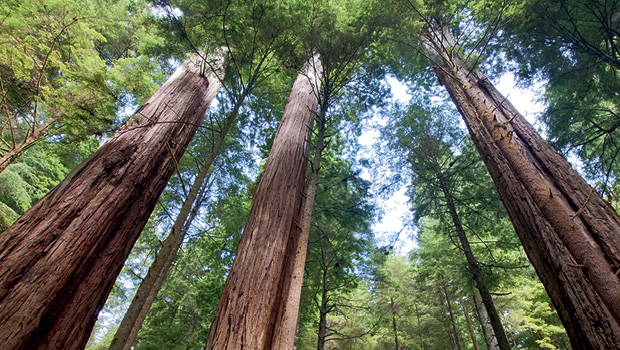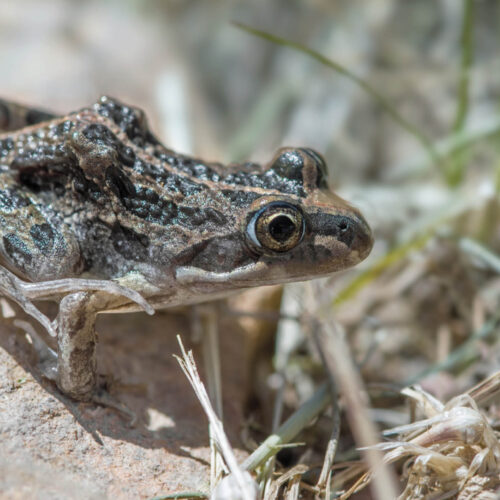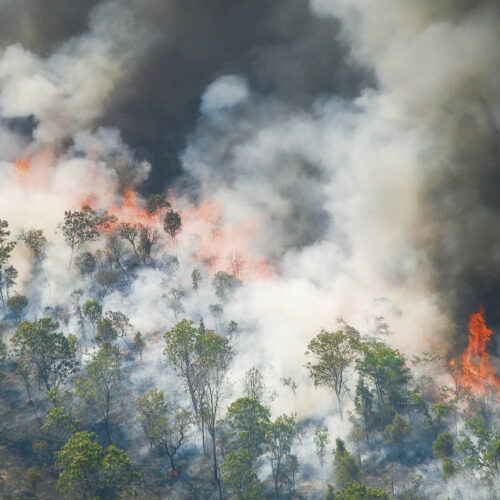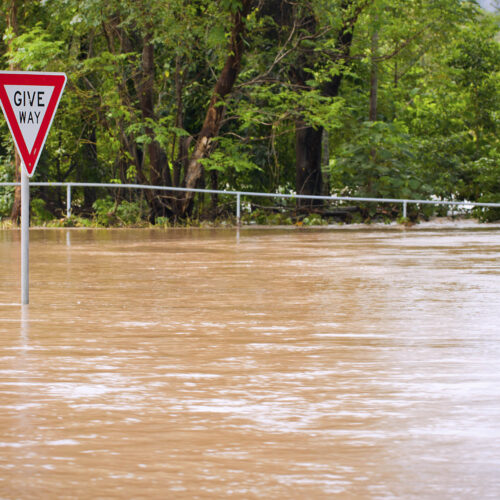Fighting for our forests
2016-08-15T04:22:51+10:00
The world's forests are the lifeblood of Earth, yet their future is threatened, and our existence with it. It's time to turn back the tide, one tree at a time, writes DR REESE HALTER.
All wild forests are teeming with life and contain a magic balance between innumerable species and processes. They are biological treasure houses, beyond any human-created museum. An individual can easily walk through a forest without noticing the masses
of elements that work in concert to generate and sustain a dynamic environment, from the tiniest insect to the amount of sunlight that penetrates a canopy.
About 10,000 years ago, 50 per cent of the Earth’s land surface was forested. Today, a little over 30 per cent is covered with forests and a lot of that decline is due to humans. Trees and forests are the lifeblood of the planet and they are in trouble, globally, and therefore so are we.
The value of forests
Trees with woody trunks and a vascular system, towering over the land, have existed on Earth for more than 350 million years. Not only did trees provide indispensable shade for dinosaurs, they also helped modify the water and energy flow between the land and atmosphere.
Every tree in the world participates in many biological processes, but one of the most notable is photosynthesis. In this process, leaves absorb carbon dioxide (CO2) from the atmosphere, mix it with water, convert it into sugar using the sun’s energy, and give off oxygen as a byproduct. In fact, trees are the greatest CO2 warehouses to have ever evolved. For every tonne of wood created, 1.5 tonnes of CO2 is absorbed and 1 tonne of oxygen is released. Old forests are superlative at capturing and storing vast amounts of CO2.
Wild forests occupy amazing swathes of land. The northern forests or boreal make up the largest uninterrupted, or contiguous, forested area on the surface of the planet – the Earth’s emerald crown. Stretching across Canada, through central Alaska, northern Asia, Russia, Europe, Scandinavia and northern Scotland, the taiga contains one-third of all trees in the world, and is characterised by very long and very cold winters.
In sections, these forests are populated by the most widespread tree on the globe, the European aspen, as well as especially resilient species such as the deciduous Siberian larch, which can withstand temperatures of -55°C. These biological communities thrive in the northern environments.
The temperate forests, meanwhile, are located about half way between the tropics and the poles in both hemispheres and have moderate climates with four distinct seasons. In the southern hemisphere there are relatively small areas of temperate forests, in South America, Africa, New Zealand and Australia. In the northern hemisphere they are primarily found in Europe, the eastern half of the United States and parts of China and Japan.
Temperate forests contain the biggest trees in the world, including coastal redwoods of northern California which have been known to reach in excess of 115m and are the tallest of all 80,000 known tree species. The second tallest are our own mountain ash, or swamp gums, which have been recorded in excess of 99m in Tasmania and Victoria.
Tropical forests hug the equator within 10 degrees or so, occupying an area of about 6 per cent of the Earth’s surface. Yet these exquisite forests contain at least half the known species of plants and animals in the world. The three largest tropical forests in ascending order are South America’s Amazon, Africa’s Congo and South-East Asia’s Indonesian jungles.
Amazon wealth
The Amazon is crucial habitat to one in 10 of the 1.6 million known species on the planet. More than 2000 tree species live in a hectare of Amazonia. It is typically warm, wet and windless throughout the year.
Tropical rainforests such as the Amazon are splendid rainmakers. The bright morning sunshine heats up the vegetation and evaporates water from it, resulting in the upward convection of wet air. As the air rises, it forms clouds and produces rain in the afternoon and evening. More than half of the rain that falls on the great jungles of the Amazon River Basin returns to the atmosphere through the leaves of trees, to fall again as rain on the Amazon forests. That daily cloud formation reflects a massive amount of incoming solar radiation back into space; these clouds are of paramount importance for keeping the world cool.
Frighteningly though, this most majestic of jungles is breaking down with alarming regularity and the effects are amplifying around the globe. Human activity, including accelerated deforestation, is wreaking havoc with wildfires, droughts, heat waves and insect epidemics.
Global alarm bells
Below I list some of the most dire forest situations around the world, starting with the Amazon. Not to depress you, but to show the bigger picture and the need for an immediate and concerted international global effort to save them. As well as fighting to slow climate change and save the oceans, we must protect the forests. Take a deep breath while you can!
The Amazon has not evolved to contend with severe winds. In 2005 a lethal combination was unleashed: first, a powerful thunderstorm 100km long by 200km wide ripped through the Amazon Basin from the south-east to north- west. It levelled half a billion mature trees or 23 per cent of the estimated mean annual carbon accumulation capacity of the Amazon forest (trees emit CO2 when they decompose).
Then a one-in-one-hundred-year drought occurred. The Amazon failed to absorb an estimated 1.5 billion tonnes of CO2 that year, and over the following decade it released approximately 5 billion tonnes of CO2 from the decomposing 500 million blown-down trees. Two years later, extreme droughts in the south-east Amazon rainforest created conditions for epic wildfires, 10 times more fires than in an average year. The area that burned in 2007 was the equivalent to one million soccer fields. Then in 2010, the second one-in-a-hundred-year drought gripped.
That enormous area of dead jungle is releasing 8 billion tonnes of CO2 over the ensuing decade. All those billions of dead trees means that Earth is losing its tremendous rain- making machines, and instead it is absorbing mega amounts of incoming solar radiation rather than reflecting it.
What this means is that the Earth’s largest tropical forest, the Amazon Basin, has begun a transition from pristine wilderness to drought and fire-dominated regimes on a scale never witnessed since our progenitors first walked the planet seven million years ago. The Amazon jungle has reached its tipping point; it’s on the verge en masse of contributing to rising greenhouse gases rather than removing them.
As if all these deadly events were not frightening enough, 158 scientists recently issued a warning that at the current rate of Amazonian deforestation, 57 per cent of the 15,000 tree species are heading toward extinction, including mahogany and food-bearing Brazil nuts, cacao and acai palms.
Extreme conditions
The Amazon, of course, is not alone in suffering the effects of deforestation and climate change. Extreme droughts in North Africa are killing Atlas cedar trees from Morocco
to Algeria. Heat and drought are battering high-elevation tropical forests in Uganda, mountain acacia in Zimbabwe and centuries-old aloe plants in Namibia. Tropical forests
of Malaysia and Borneo have suffered significant death. Drought has also lambasted the tropical forests of north- west and south-west India, fir in South Korea, the junipers of Saudi Arabia and pine and fir of central Turkey.
Heat waves, droughts and wildfires have ravaged Australian forests, too. The Black Saturday bush fires that scorched Victoria on Saturday, February 7, 2009, were Australia’s all-time worst bushfire disasters, resulting in the deaths of 173 people and the highest ever loss of wildlife.
Drought is killing the marri and jarrah forests, which are precious habitat for threatened Carnaby’s black-cockatoos of south-west Western Australia. Deadly heat-induced stress in northern Tasmanian forests caused blue and white gums to exude their sap, dubbed the “ginger syndrome” for the blood-like bark discolouration. More than 2000 square kilometres of the Cooma-Monaro region of NSW are now a mass graveyard of ribbon gums because it is too dry for these forests to exist.
Rising temperatures, insect epidemics and wildfires have left an indelible stamp across the North American continent. Trillions of indigenous bark beetles killed 30 billion mature pines and spruce across the west, and those decaying trees are now leaking greenhouse gases into the atmosphere, instead of removing them. Last year, wildfires charred over four million hectares across America – it was the costliest fire season on record at $1.7 billion.
If this isn’t shocking enough, Chinese oil companies intend on buying one-third of Ecuador’s remaining Amazon jungle or 2.7 million hectares for oil and gas exploration. This would be a huge blow in conservation efforts to protect the remaining Amazon forests from further damage and exploitation. The insatiable Asian demand for prized timbers is also driving lucrative illegal logging from Madagascar to the Congo, and from Thailand and Cambodia across the Pacific into Russia.
Action stations
The key to our survival is slowing down the destruction of wild forests because the strength of an ecosystem depends upon all of its interdependent biodiversity, especially in
the midst of the climate crisis. Conservationists, scientists, city authorities and individuals around the world are taking positive actions and offering us hope by planting trees, rejuvenating forests, protecting bushland and fighting land clearing. Here are some examples.
Trust for Nature is Australia’s oldest private land trust working with landholders in Victoria to protect properties in perpetuity from logging and tree clearing and to ensure habitat for wildlife. So far the trust has protected 50,000 hectares through private land conservation covenants.
The tiny country of Bhutan celebrated the birth of King Khesar and Queen Jetsun’s new baby, His Royal Highness, The Gyalsey, on February 5 this year with all 82,000 of
the nation’s households planting a tree. New York City recently completed its one-millionth tree planting in its efforts to combat the climate crisis by future-proofing its neighbourhoods. New York City is striving for a 40 per cent urban canopy, the benchmark set by Melbourne.
In 2007, Felix Finkbeiner challenged his classmates in Germany – and ultimately around the globe – to plant one million trees in each country, a dream that grew into an international youth organisation called Plant for the Planet. In 2011, the United Nations handed over its Billion Tree Campaign to be administered by Plant for the Planet.
Australian children are doing their part to help future- proof the nation. One Tree Per Child program, co-founded by Olivia Newton John, is planting trees from Coogee to Cottesloe in a vital effort to engage children with nature, empowering them to be good stewards of the land.
Dutch biologist and animal rights activist Dr Willie Smits is on a mission to rehabilitate Borneo’s glorious rainforests. The palm oil plantation industry and its slash-and-burn technique of clearing the land is ruinous for the forest and millions of people. So Smits and legions of volunteers are replanting the cutover, burned forests with a mixture
of native tree species as well as inoculating soils with microbes – and it is working! Smits and his teams are building biodiversity back into the denuded sites, helping to recreate habitat for the beleaguered orangutans and many other animal species.
For those who want to lend a helping hand there are excellent organisations that focus on the planting and protection of trees. Of course, we can all head into the garden, schoolyard or workspace and plant as many trees as possible. A crucial issue facing lawmakers around the globe is to protect the remaining trees, bushland and forest from the axe because they are invaluable CO2 warehouses, fresh water catchments and crucial habitat for the creatures facing rising extinction rates. Every tree from individuals to remnant bushland and magnificent wild forests counts, and it will require a colossal global effort to save them. The sooner we begin, the better the chance of our survival.
Trees doing good
Here’s just a few other ways that trees are invaluable:
- One-third of the world’s cities obtain most of their drinking water from protected forest areas.
- Trees absorb city air pollutants (nitrogen oxide, ammonia, sulphur dioxide and ozone) by trapping them in their leaves.
- A hectare of mature trees can provide enough oxygen for one year for 36 people.
- Trees cool streets and cities by up to 6°C. 51
- Trees planted strategically around a home cut summer air-conditioning energy by up to 50 per cent. By reducing the energy consumption demand, we reduce CO2 and other pollutants such as mercury vapour emitted by coal-fired power plants.
- Trees help fight the climate crisis. In one year a hectare of mature trees absorbs the CO2 emitted by four gasoline-powered automobiles, driving a combined distance of 90,000km.
- One apple tree can yield 400kg a year, providing family, friends and wildlife with nutritious food.
- Research shows that patients with views of trees out their windows heal faster and with fewer complications. Children with ADHD show fewer symptoms when they have access to nature. Exposure to trees and nature helps concentration by reducing mental fatigue.
- Half of the top 10 prescription drugs in Australia and America come from animals, plants and microorganisms found in tropical wild forests, and three-quarters of all cancer drugs come from nature.
For further information try:
The Wilderness Society: wilderness.org.au
The Forest Trust, global network: tft-earth.org
Plant for the Planet: plant-for-the-planet.org
Trust for Nature: tfn.org.au
Greenpeace: greenpeace.org.au
Rainforest Action Network: ran.org
Books: The Weather Makers by Tim Flannery
The Insatiable Bark Beetle by Dr Reese Halter
This article appeared in ABC Organic Gardener Issue 89, September 2016.






